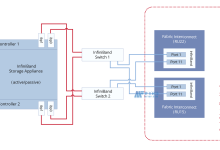linux is one of the most powerful operating systems on the market, offering users the ability to maximize their system’s performance and process bandwidth. This is especially important for businesses, providing them access to powerful resources at minimal cost. In order to take advantage of the system’s capabilities, users must understand the basic principles of Linux process bandwidth and the different processes that can be used to improve efficiency.
First and foremost, it’s important to recognize that Linux process bandwidth can be divided into three major categories: input/output, memory/CPU utilization and Kernel resource sharing. Each of these areas can be managed and optimized to suit the user’s specific needs.
Input/output is one of the main components of Linux process bandwidth optimization. This is because input/output operations can take quite a bit of memory and processing power, so it’s important to manage them properly. A good way to increase both the speed and efficiency of input/output is by using a combination of buffered I/O and direct I/O. Buffered I/O is more suitable for larger transfers, while direct I/O is better for smaller, more frequent transfers.
Memory/CPU utilization is also important for Linux process bandwidth optimization. When managing memory and CPU utilization, it’s important to keep in mind that more resources don’t necessarily mean more performance. Instead, it’s best to focus on using the most optimal resource allocation. To accomplish this, users can utilize kernel resource scheduling and process monitoring utilities.
Finally, kernel resource sharing is an important factor in Linux process bandwidth optimization. In order to make the most of the available resources, users can use techniques such as process containers, control groups and virtualization to better manage and allocate resources.
Following these tips, businesses can maximize their Linux process bandwidth and ensure that they are able to take full advantage of the powerful capabilities of their chosen operating system. Deploying the proper processes, along with the right configuration, can help businesses get the most out of their systems and ensure that they have the resources needed to remain competitive on the market.

 国外主机测评 - 国外VPS,国外服务器,国外云服务器,测评及优惠码
国外主机测评 - 国外VPS,国外服务器,国外云服务器,测评及优惠码









